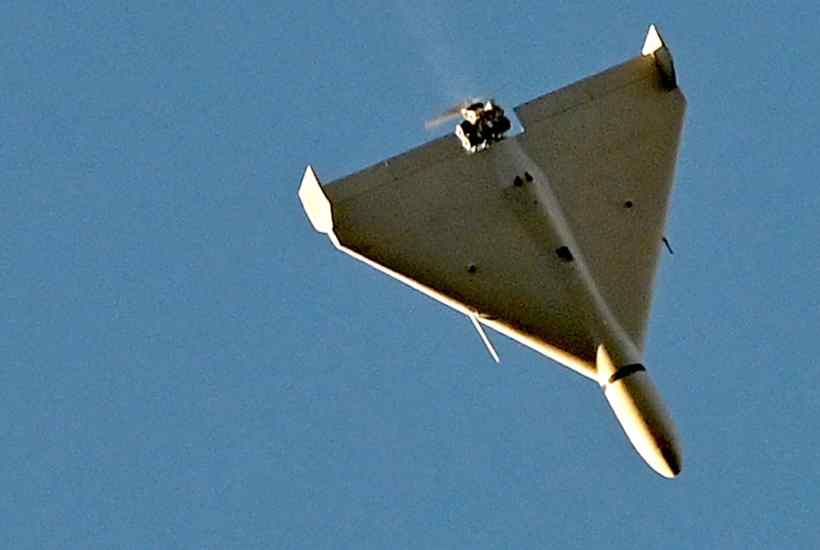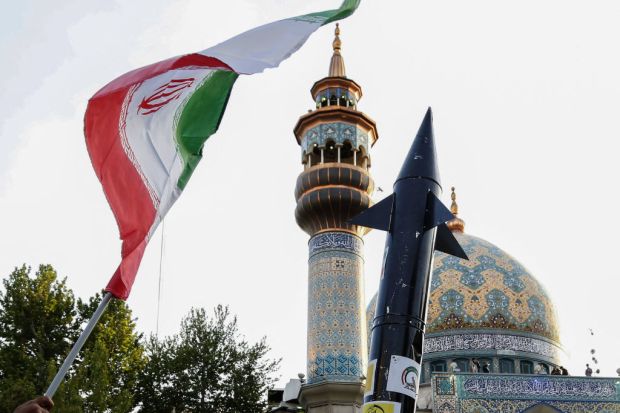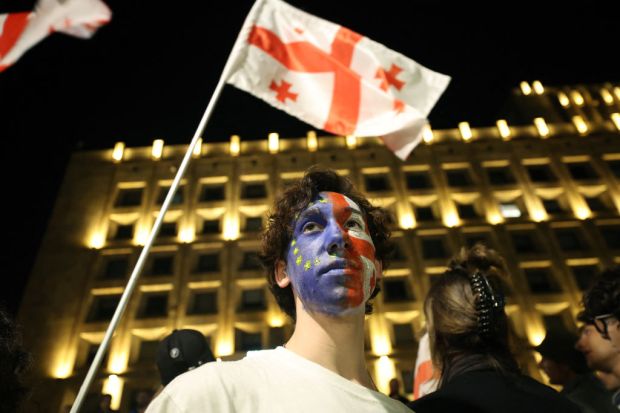As Iranian munitions have hurtled through the air at the front line in the Donbas, and as Iranian suicide drones have smashed into Ukrainian cities, Tehran has denied everything – unconvincingly. The most recent was Iran’s foreign minister, Hossein Amirabdollahian, who said on Saturday: ‘The Islamic Republic of Iran has not and will not provide any weapon to be used in the war in Ukraine’. With the piety beloved of hypocrites everywhere, he went on: ‘We believe that the arming of each side of the crisis will prolong the war’.
This is part of a pattern. For most of the last few weeks, Iran has officially denied that its weapons and drones have been sold to Russia for use in Ukraine – even though the use of signature Iranian weapons has been very obvious. The Shahed ‘martyr drones’ alone are unmistakable, and they have been filmed crashing, like V2 bombs, into residential targets across the country. They struck Kyiv again today.
America’s intelligence agencies have also passed on to the newspapers stories of Iranian officials travelling to Moscow to co-ordinate deliveries as early as September. And now, American newspapers report, Iran is preparing to send more types of drones, and much more of its large arsenal of ballistic missiles.
Iran’s ballistic missile programme is significant and diverse. It manufactures its own missiles and sends its Islamic Revolutionary Guards Corps missile-builders as far afield as Lebanon and Yemen. Iran operates a region-wide network of proxies, all of whom want to field missiles and drones to fire at Saudi Arabia, Israel, and American bases – and which the regime is happy to provide them.
But war is expensive and whenever wars break out, armies quickly run out of material. It seems every major conflict is accompanied by a ‘shell crisis’, in which the pace at which artillery is fired – by every side – significantly outstrips even the most realistic of pre-war estimates. Countries that can most effectively gear their entire economies to manufacture arms and provide soldiers tend to do better in existential wars like this.
For Russia, this is a double-edged problem. This invasion was always a ‘special military operation’, meant to be over in a week. Now it’s an almost total war of a scale military planners had never anticipated. Ukraine has largely outsourced its procurement and manufacturing of arms to the West – and its allies make up the majority of global GDP. Although European and British warehouses are emptying faster than anticipated, America is still equipped to arm Ukraine for many years.
Russia’s own stockpiles of arms were meant to be enormous, but they have proven not to be. Poor maintenance and corruption meant that Russian munitions were badly kept or stolen and sold. Sanctions mean that Russia cannot buy weaponry on the open market, or manufacture complex armaments using western components.
Russia’s armed forces were said to be running short of precision munitions – guided missiles and bombs – even early in its invasion. Iran seems a good enough source of extra weaponry. At least the deal would work out for Russia.
But for Iran, there are complications. All of this could easily backfire on the regime. One Israeli minister, Nachman Shai, minister of diaspora affairs, has already broken ranks to say that Israel should drop its official neutrality and begin arming Ukraine in response to Iranian actions. His perspective is not very important; he is not a defence minister and Israel has a weird cultural affinity – backed up by arms deals – for Putin’s Russia which for many of its advocates is privately maddening and self-defeating.
But the Iranian government faces problems at home. Millions of young people are marching in the streets and defying the violent threats of the clerics at this very moment. Protest movements in both Russia and Iran often focus on the foreign wars fought by the state at the people’s expense. The Navalny movement in Russia managed to make some headway suggesting that Russia’s years-long campaign to support the regime of Bashar al-Assad in Syria was a waste of time and money. Russian people being largely unwilling to hear that supporting Assad is evil, it’s easier to say that doing so is expensive.
In Iran, smaller protest movements over the years have baulked at the cost of funding Assad, of keeping a perpetual proxy war against Israel going, and building an expensive and difficult nuclear programme in the teeth of hard sanctions. Let us not forget that a symbol of the regime – the notorious Evin prison – very publicly burned this week.
The Islamic Revolutionary Guard and clerical hold on power has never looked weaker. Joining a doomed enterprise like Russia’s invasion of Ukraine may be a way to make quick money, but it cannot stabilise Iran domestically or diplomatically.
If the United States and Ukraine’s allies decide to penalise those countries covertly arming Russia, more sanctions could be on the way. Iran’s regime is already weakening. Selling drones and missiles might gratify its leaders’ bloodlust and hatred of an American-led world, but it could also doom the regime.
Got something to add? Join the discussion and comment below.
Get 10 issues for just $10
Subscribe to The Spectator Australia today for the next 10 magazine issues, plus full online access, for just $10.



















Comments
Don't miss out
Join the conversation with other Spectator Australia readers. Subscribe to leave a comment.
SUBSCRIBEAlready a subscriber? Log in